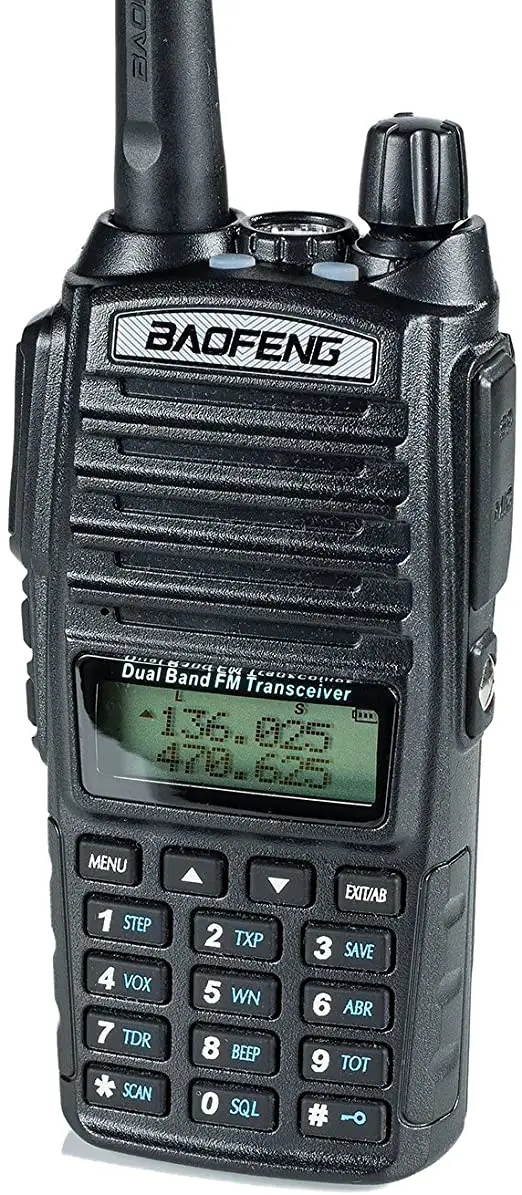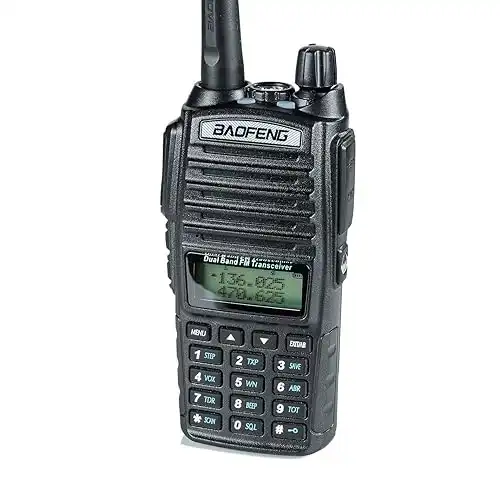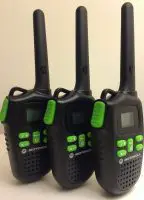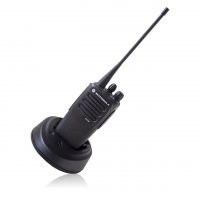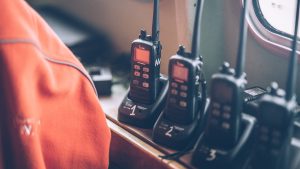Communication in the event of a crisis is a recurring topic. The Baofeng UV-82 is a high-power commercial dual-band amateur radio which allows transmitting and receiving beyond the conventional PMR446 frequencies.
The radio can be used on all waves: marine VHF, PMR, and UHF, subject to license. Today we will go into detail with the review of the Baofeng UV-82 radio, from the power source to range, other features, and the pros and cons.
Table of Contents
Power Source
The two-way walkie-talkie is powered by a removable battery. Its three power levels of 1, 5, 7, or 8 watts make it unique. The removable battery can be recharged with or without the radio on a mains-operated cradle.
When charging the battery, make sure to engage the battery on the two notches of the support. Without this, the battery will not be well-positioned, and contact with the charging terminals will not be good. It is necessary to make a full charge (the orange LED must turn green) before using the radio again to preserve the battery.
Range
How far the device transmits depends on your location and other criteria. The frequency range of this radio is between 136 to 174 MHz on VHF. On UHF, it reaches 400 to 520 MHz. When used on flat ground with no obstructions, you’ll get up to two miles.
In crowded or urban areas, the range will be less, but you can increase its frequency range when you use it at a higher elevation or use it with a high gain antenna. Also, you can vastly increase the range by using it on repeater channels.
Features
The Baofeng UV-82 is a VHF / UHF dual-band walkie-talkie for transmission and reception from 136 to 174MHz and 400 to 520MHz with 5 or 8 watts max. in VHF 144Mhz (UV-82HP) and 4 or 5W max. in UHF 430 Mhz. It has an FM radio, an LED lamp, a double PTT button, and a standby of 2 channels/frequencies simultaneously. It is powered by a high-capacity 2800 mAh battery.
The use of any radio transmitting device and the Baofeng UV-82 walkie-talkie is subject to the frequencies and legislation in force. It requires a radio license to be legally used in transmission.
The radio can be used even when WiFi and conventional communication systems are down. No telephone network? No worries, it works! You just need a charged battery, and you can communicate without problem. It is useful in a crisis to organize with helpers or simply for outdoor adventures like hiking, paragliding, on the ski slopes, for walks, and more. It also occupies an important place in the practice of sport or the organization of events (concerts, festivals, etc.).
The handling of the radio is excellent. The case is resistant and of high quality. It is quite compact, measuring approximately 12 x 6 x 3 cm and weighing no more than 215 g, without the antenna. It is composed of an aluminum structure and a polymer shell. The buttons are big enough to be used with gloves.
However, we noticed that the volume knob tends to easily come off the iron rod, especially when using the radio in a pouch. The keyboard and screen are backlit and very useful for use in dark spots.
The belt clip is directly fixed in the aluminum structure, which gives it very good resistance.
You will have a good time with the FM function. On the other hand, we find it a bit of a shame that we cannot lock the buttons. They sometimes engage by themselves when the radio is in the pocket.
Pros
- It has a durable commercial case
- Versatile for amateur use
- 1800mah rechargeable battery
- Includes a charging station
- Water-resistant radio
- Ideal for the visually impaired
cons
- Not approved by the FCC
- Requires a license
Conclusion
Although the use of UV-82 is subject to licensing, it is a very good acquisition. It is robust and reliable and has a long battery life and a good range. However, it can put off novices with its complex menu, but a few tutorials later, you will be on the path to discovering the perfect amateur radio!


